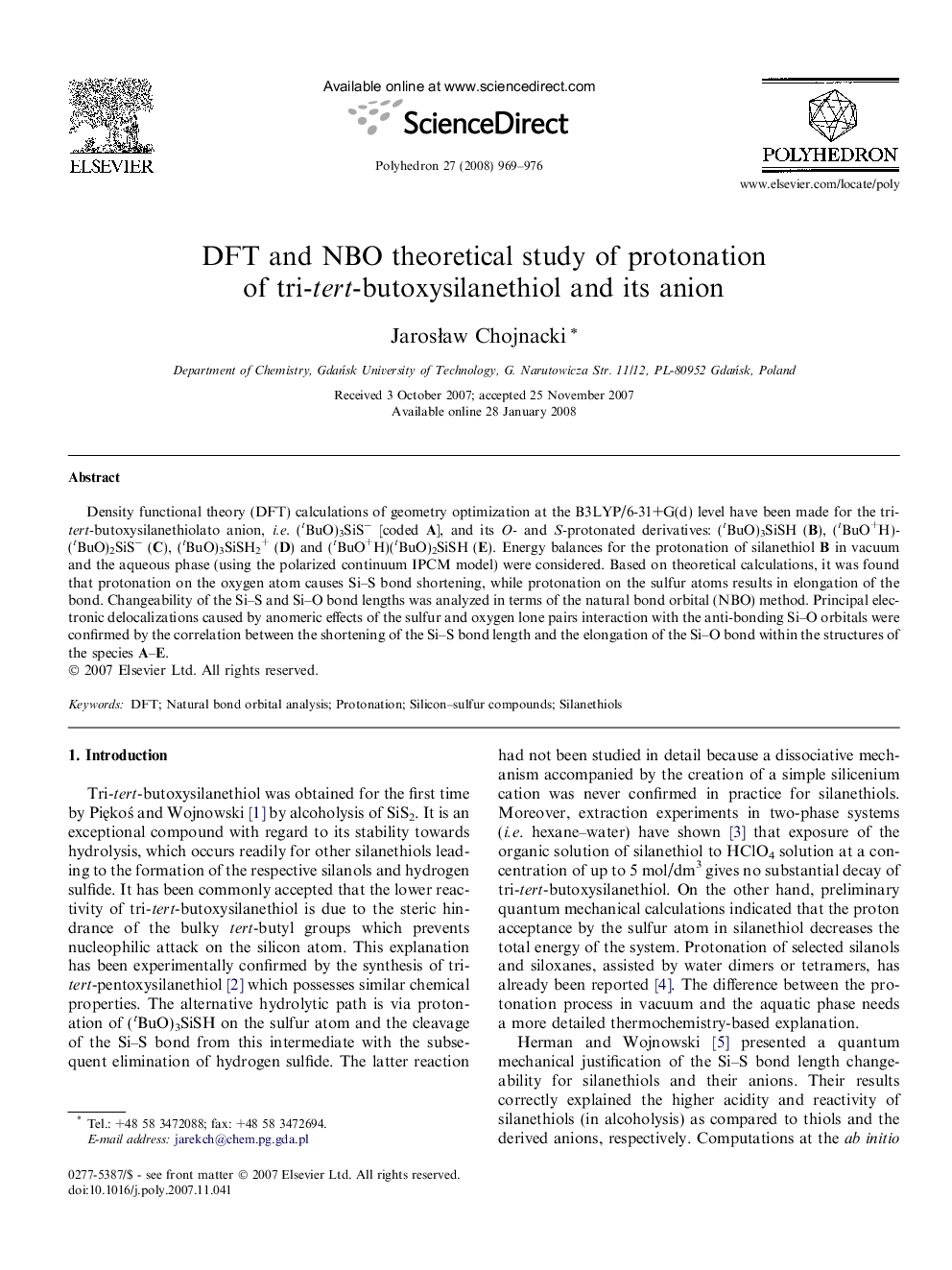| کد مقاله | کد نشریه | سال انتشار | مقاله انگلیسی | نسخه تمام متن |
|---|---|---|---|---|
| 1340709 | 979747 | 2008 | 8 صفحه PDF | دانلود رایگان |

Density functional theory (DFT) calculations of geometry optimization at the B3LYP/6-31+G(d) level have been made for the tri-tert-butoxysilanethiolato anion, i.e. (tBuO)3SiS− [coded A], and its O- and S-protonated derivatives: (tBuO)3SiSH (B), (tBuO+H)(tBuO)2SiS− (C), (tBuO)3SiSH2+ (D) and (tBuO+H)(tBuO)2SiSH (E). Energy balances for the protonation of silanethiol B in vacuum and the aqueous phase (using the polarized continuum IPCM model) were considered. Based on theoretical calculations, it was found that protonation on the oxygen atom causes Si–S bond shortening, while protonation on the sulfur atoms results in elongation of the bond. Changeability of the Si–S and Si–O bond lengths was analyzed in terms of the natural bond orbital (NBO) method. Principal electronic delocalizations caused by anomeric effects of the sulfur and oxygen lone pairs interaction with the anti-bonding Si–O orbitals were confirmed by the correlation between the shortening of the Si–S bond length and the elongation of the Si–O bond within the structures of the species A–E.
Protonation on the sulfur atom gives elongation of the Si–S bond, while protonation on the oxygen atom causes shortening of the Si–S bond. Natural bond orbital (NBO) analysis was applied for justification of the changeability of the Si–S and Si–O bond lengths. Interaction of sulfur and oxygen lone pairs with anti-bonding Si–O orbitals may be a good explanation for the accounted trends.Figure optionsDownload as PowerPoint slide
Journal: Polyhedron - Volume 27, Issue 3, 26 February 2008, Pages 969–976